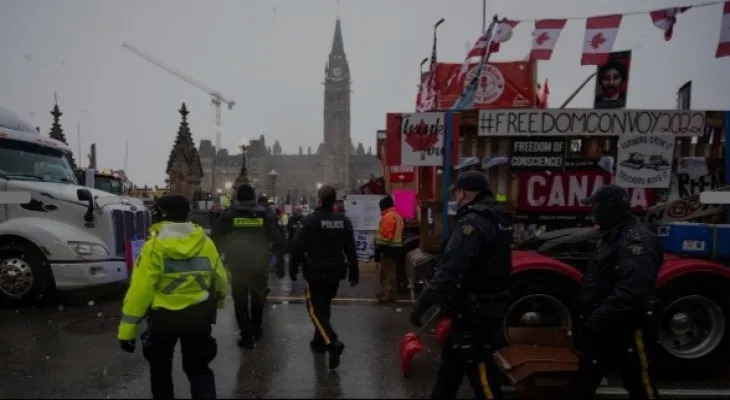Search here
Newspaper
Search here

Arab Canada News
News

Published: August 17, 2023
When the Public Order Emergency Commission released its five-volume report and concluded that the federal government had ultimately met the threshold for invoking the Emergencies Act, Prime Minister Justin Trudeau promised to deliver a plan to respond to the report's findings within six months.
The deadline for this commitment is February 17, which falls on a Friday.
Commissioner Paul Rouleau - who was chosen to lead what became an expansive investigation into Trudeau's use of extraordinary national powers to end the "Freedom Convoy" protests and blockades - issued 56 recommendations for the federal government to consider.
Rouleau's recommendations were divided into six categories, and included calls for change across government levels:
Policing, federal intelligence gathering and coordination; critical trade corridors and infrastructure; changes to the Emergencies Act; areas for further study; and follow-up and accountability.
At that time, Trudeau vowed to respond to Rouleau's call within a year of the report, but after being pressed by reporters, he committed to moving forward with a plan to address the recommendations within six months.
Trudeau said this winter: "Because of the thoughtful work of the Commission, there are lessons for all involved." He added, "We will take seriously what the Commissioner concludes and what he suggests."
Rouleau had also requested in his comprehensive public response that the federal government specify which recommendations it accepted and which it rejected, and provide a detailed timeline for implementing the changes to be made along with a comprehensive explanation for other calls. The action was rejected.
The office of Minister of Public Safety and Emergency Preparedness Dominic LeBlanc confirmed to CTV News that he is aware of the looming deadline he set for himself and that he will have "more to say in the coming days."
Before the federal government reveals its plan going forward, here is a refresh on some of the major changes focused on federalism that Rouleau wants to see to avoid similar occupations and closures at major border crossings in the future.
Centralized Policing Leadership:
Half of Rouleau’s recommendations focused on police reforms, including working across jurisdictions to enhance intelligence-sharing protocols that include clear lines of communication and accountability, including how to request additional law enforcement resources for major events.
Rouleau also wants to see police consider establishing a single national intelligence coordinator for major events at the national or interprovincial level. He suggested that the Royal Canadian Mounted Police consider leading an initiative for police services across the country to adopt a single model of leadership and governance.
The federal government must take the initiative in examining "the scope and limits of police powers regarding protest activities" with the aim of clarifying authorities, perhaps through legislation or new protocols.
There should also be ongoing consultations about whether changes should be made to how security responsibilities are divided in the National Capital Region among the various levels of policing operating in and around Parliament Hill.
Updating the Emergencies Act:
The second main area of focus in Rouleau’s recommendations was on changes he believes should be made to the Emergencies Act, which was enacted in 1988.
The Commissioner calls for the removal of the reference to the CSIS definition of "threats to the security of Canada." This section was the cause of much alarm during the public hearings, after it was revealed that CSIS did not view the protests as a threat to national security by definition, although Trudeau's national security advisor and others did.
The Commissioner stated he would like to see an in-depth review of the portion of the law that focuses on emergencies relating to public order, with the aim of ensuring the definition is updated to capture situations that could legitimately pose a serious threat to public order now and in the future.
Comments